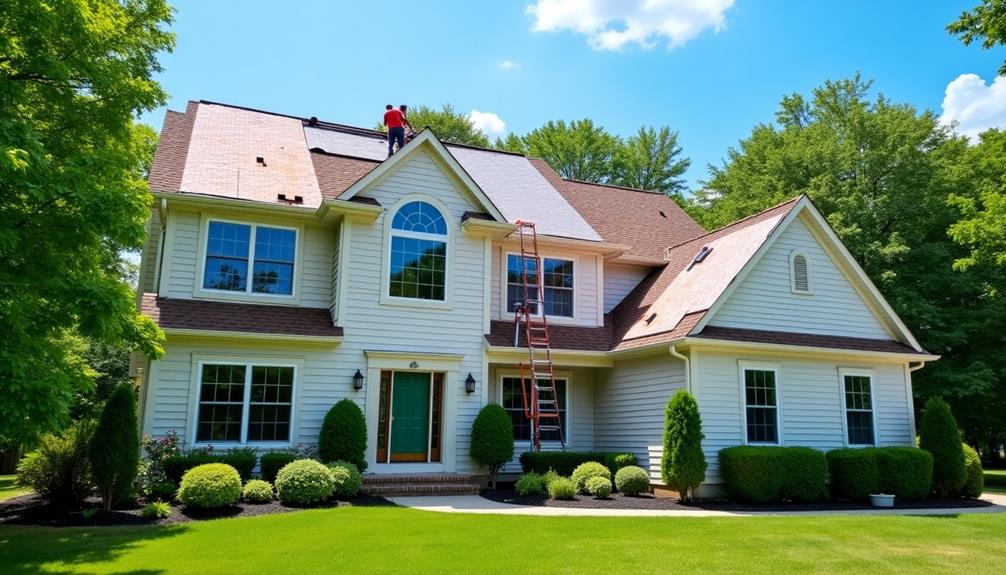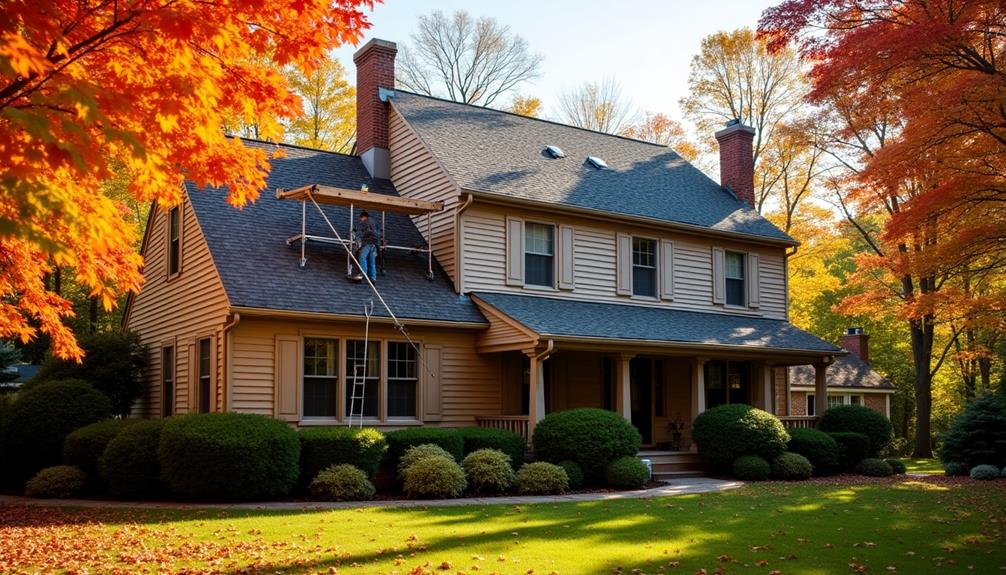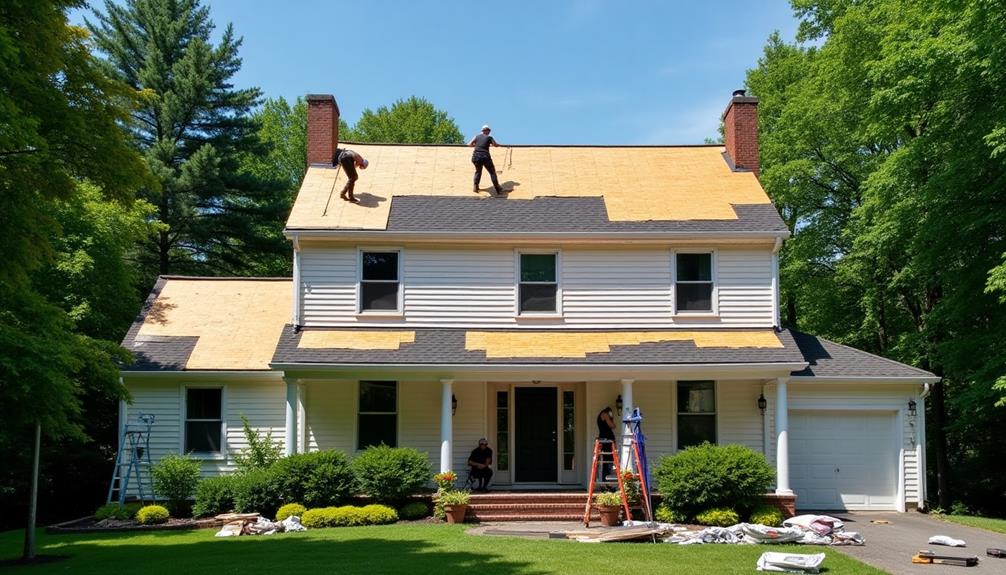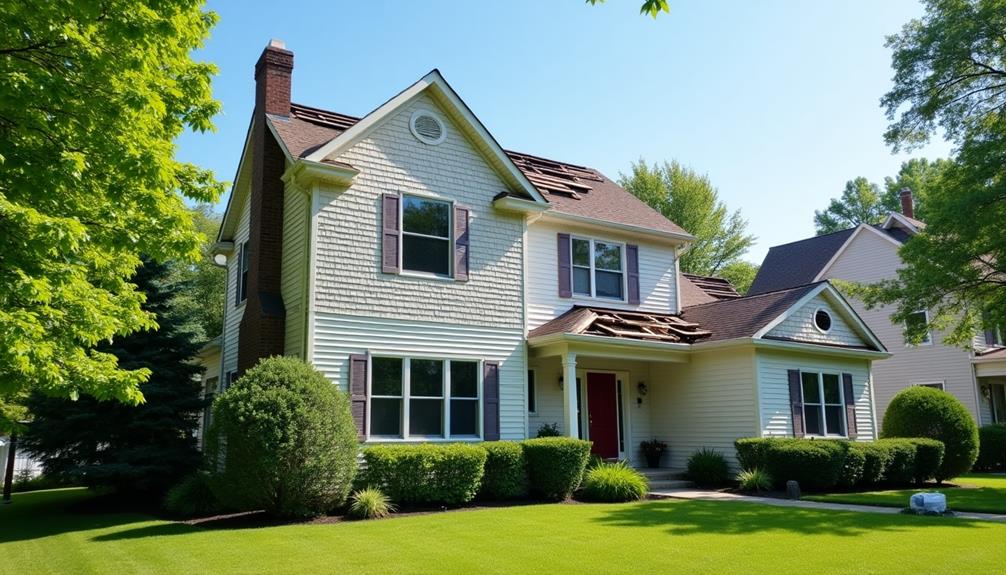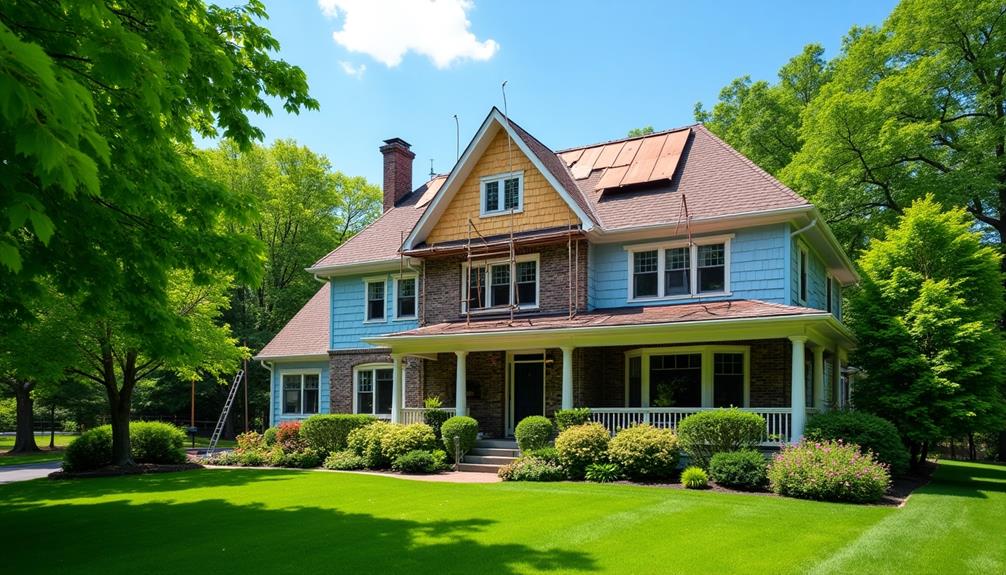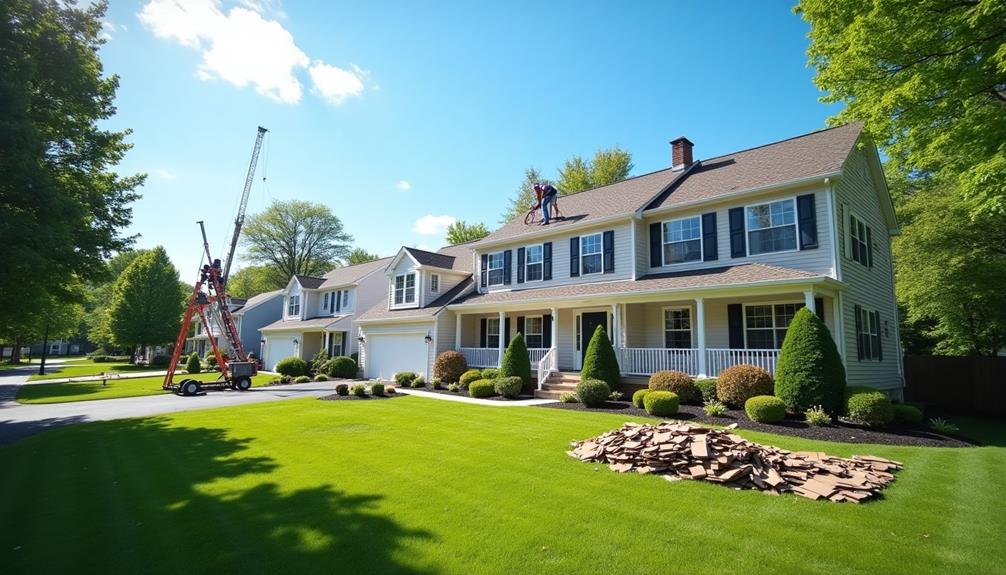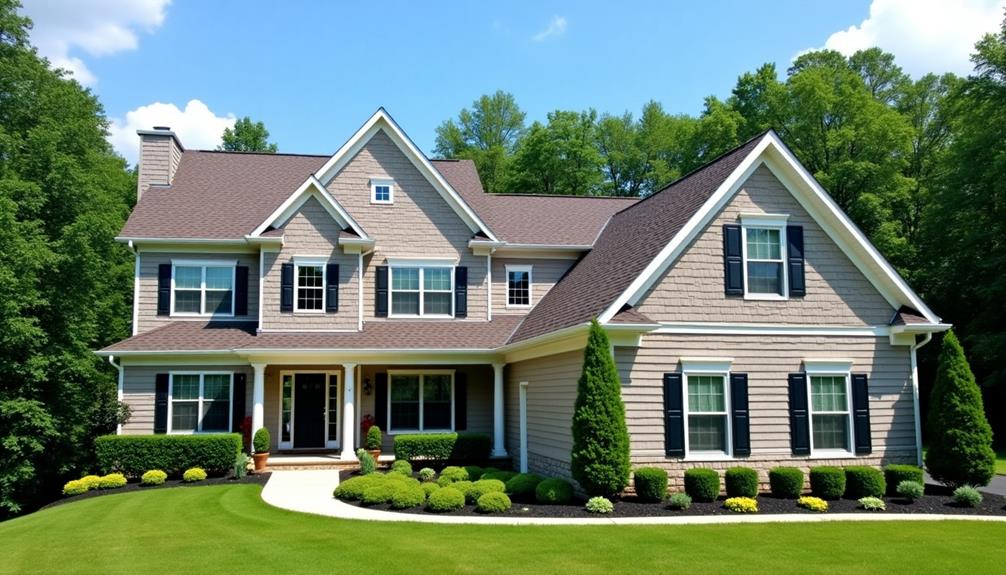If you're considering roof replacement in Ewing, NJ, it's crucial to recognize key indicators such as aging shingles, water stains, or noticeable wear. Opt for durable materials like asphalt, metal, or slate based on your budget and energy efficiency needs. Before starting, secure the necessary permits and schedule a professional inspection to evaluate underlying issues. Consider costs including labor, materials, and potential structural repairs. Choose a licensed contractor with positive reviews for quality assurance. Knowledge of the replacement process empowers you to make informed decisions. Explore further to understand how these factors impact your roof replacement journey.
Signs You Need a Roof Replacement
Over time, your roof can show signs that it's ready for replacement. Understanding these signs is crucial for maintaining your home's integrity.
First, consider the roof age; most roofs have a lifespan of 20 to 25 years. If your roof is nearing this age, it's wise to start monitoring its condition closely.
Look for visible wear, such as curling or missing shingles, which can indicate impending failure. Also, check for granule loss in gutters, a sign that shingles are deteriorating.
Pay attention to any water stains on your ceilings or walls, as these can suggest leaks. Conduct regular leak detection to identify potential problems early. If you notice leaks, it's often a signal that your roof may no longer be able to protect your home effectively.
Additionally, inspect the flashing around chimneys and vents for rust or damage, as compromised flashing can lead to significant leaks.
If you see any signs of mold or algae growth, it could indicate moisture retention, necessitating immediate attention. If these issues arise, consulting a professional for an evaluation can help you determine if a roof replacement is necessary.
Choosing the Right Roofing Materials
When choosing roofing materials, you need to consider both durability and energy efficiency.
Selecting materials that withstand harsh weather conditions will protect your home and reduce maintenance costs.
Additionally, energy-efficient options can lower your utility bills and enhance your home's comfort.
Material Durability Considerations
Choosing the right roofing materials is crucial for ensuring the longevity and performance of your roof. When considering material durability, you need to evaluate factors like material lifespan and weather resistance. Different materials offer varying levels of durability, which directly impacts how long your roof will last.
For instance, asphalt shingles typically last 15-30 years, while metal roofing can endure 40-70 years, depending on the type. If you live in an area prone to severe weather, opting for materials with high weather resistance, such as slate or metal, can be beneficial. These materials can withstand strong winds, heavy rain, and even hail, reducing the risk of damage over time.
Additionally, consider how well the materials perform under extreme temperatures. Some materials may warp or crack in intense heat, while others may become brittle in cold weather.
It's essential to choose a roofing material that aligns with the climate conditions in Ewing, NJ.
Energy Efficiency Options
Material durability isn't the only factor to consider; energy efficiency also plays a significant role in your roofing decision. Choosing the right roofing materials can drastically impact your home's energy consumption.
Opt for materials with high thermal resistance, such as metal or certain types of shingles, which can reflect solar heat and reduce cooling costs during hot months.
Another option is to integrate solar panels into your roofing system. This not only harnesses renewable energy but can also offset electricity costs, making your home more energy-efficient. When planning your roof replacement, think about how solar panel integration aligns with your energy goals.
Additionally, consider insulation upgrades. Proper insulation beneath your roofing can prevent heat loss in winter and keep your home cool in summer, enhancing overall energy efficiency.
Insulation materials like spray foam or fiberglass can complement your roofing choice, ensuring optimal thermal performance.
Understanding the Replacement Process
Replacing a roof is a significant investment, and understanding the replacement process can help you make informed decisions.
The first step in the process is obtaining the necessary roofing permits. Local regulations often require permits before you begin any roofing work to ensure compliance with building codes. You'll need to check with your local authorities in Ewing, NJ, to determine the specific requirements for your project.
Once the permits are secured, you'll want to schedule an inspection. Inspection requirements typically include checking the structural integrity of your existing roof and assessing any underlying issues that may affect the new installation. A qualified inspector will evaluate the condition of your roof decking, insulation, and ventilation systems to ensure everything meets current standards.
After passing the inspection, the actual replacement can commence. This usually involves removing the old roofing material, making any necessary repairs to the underlying structure, and installing the new roofing system.
Throughout this process, it's crucial to communicate regularly with your contractor to address any concerns and ensure the project stays on track. Understanding these steps will enhance your confidence and help you navigate the complexities of roof replacement effectively.
Cost Factors for Roof Replacement
When considering the cost of roof replacement, several factors come into play that can significantly impact your budget. Understanding these elements will help you prepare financially for the project.
| Cost Factor | Description |
|---|---|
| Labor Costs | This includes the expense for hiring skilled laborers. Prices can vary based on experience and the complexity of the job. |
| Permit Fees | In Ewing, NJ, obtaining necessary permits can add to your total costs. Always check local regulations to avoid fines. |
| Material Selection | Choosing higher-quality materials can increase upfront costs but may save you money in the long run through durability. |
Additional expenses may include disposal fees for the old roof and potential repairs to the underlying structure if damage is discovered. Being mindful of these cost factors helps you budget effectively and avoid surprises during the replacement process. It's crucial to gather estimates from multiple sources to ensure you're getting a fair price. By understanding these elements, you can make informed decisions that align with your financial constraints while ensuring a quality roof replacement.
Finding Local Roofing Contractors
Once you've set a budget for your roof replacement, the next step is finding reliable local roofing contractors in Ewing, NJ.
Start by searching for contractors who are licensed and insured, ensuring they can provide roofing permits as required by local regulations. This not only protects you but also guarantees that the work will meet safety standards.
Next, check contractor reviews on platforms like Google, Yelp, or Angie's List. Pay attention to feedback regarding their punctuality, workmanship, and communication skills. High ratings and positive testimonials can indicate a contractor's reliability and quality of service.
Once you've narrowed down your options, request quotes from at least three contractors. This will give you a better understanding of the market rate and help you avoid overpaying.
Don't hesitate to ask about their previous projects and for references. A reputable contractor should be willing to share this information.
Maintenance Tips for Your New Roof
To ensure the longevity and performance of your new roof, regular maintenance is essential. Start with routine roof inspections at least twice a year, ideally in spring and fall. During these inspections, look for signs of damage, such as missing shingles, leaks, or deteriorating flashing. Promptly addressing any issues can prevent costly repairs down the line.
Seasonal maintenance is also crucial. In the fall, clear leaves and debris from gutters and downspouts to ensure proper drainage. Clogged gutters can lead to water pooling on your roof, which may cause leaks and structural damage.
In winter, check for ice dams, which can form when heat escapes from your attic, causing melting snow to refreeze at the eaves.
In addition, trim overhanging branches to prevent them from scraping against the roof or falling during storms. Keep an eye out for moss or algae growth, which can compromise your roofing materials.
Lastly, ensure your attic is well-ventilated to regulate temperature and moisture levels. By following these maintenance tips, you'll protect your investment and extend the life of your new roof.

